Behaviour
All goats should be allowed to express natural behaviours. Behaviour refers to the way that an animal acts. An important type of behaviour that an animal expresses are those that are instinctive (what they would typically do in the wild). Enough space, proper shelter and housing, as well as company of the animal's own kind, encourages the expression of natural behaviours.
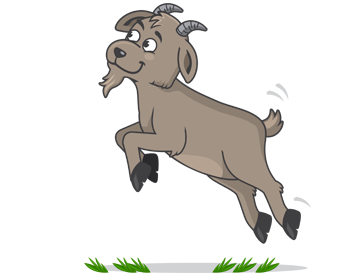
Did you know that there is a special law protecting animals?
This law is called the Animal Welfare Act. The Animal Welfare Act outlines how people must take care of and act towards animals in New Zealand. The Ministry for Primary Industries (MPI), the Police and SPCA work together to make sure people in New Zealand follow these laws.
Under the Animal Welfare Act, all animal guardians (owners) are responsible for making sure the welfare needs of animals in their care are met. Learning about the Five Domains helps us to understand these welfare needs and how we can make sure we provide these. One of the Five Domains is Behaviour. In this section you will learn about this domain and how you can make sure your goats receive the exercise and enrichment they need to express their natural behaviours.



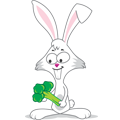




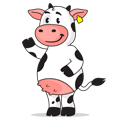




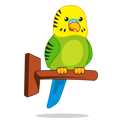



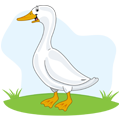

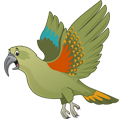

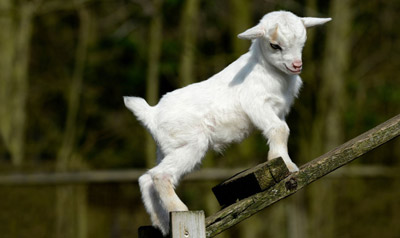 Goats are naturally curious animals who love to explore their surroundings and discover new things. They will often try to do whatever it takes to get to something that looks interesting.
Goats are naturally curious animals who love to explore their surroundings and discover new things. They will often try to do whatever it takes to get to something that looks interesting.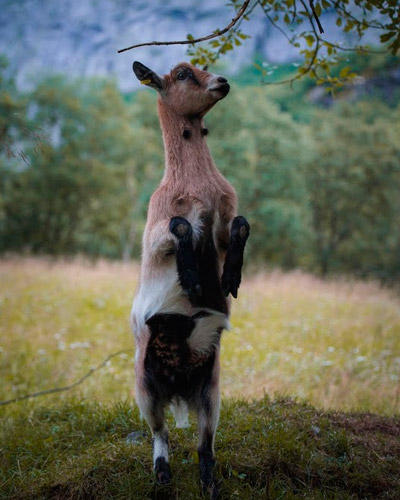 Goats are browsers which mean they enjoy searching for the best food they can find. They also enjoy variety in their diet and eating their food in new, exciting ways.
Goats are browsers which mean they enjoy searching for the best food they can find. They also enjoy variety in their diet and eating their food in new, exciting ways.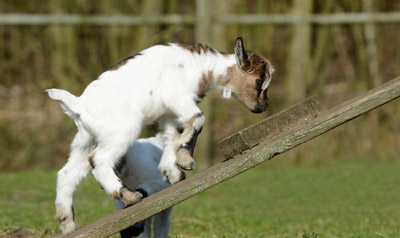 Goat hooves are specially designed for climbing and exploring. In the wild goats can climb very steep mountains and even climb trees and will do this for a big part of their day. You should give your goat some items in its environment which it can climb on and climb up. Items which are good for goats to climb could include:
Goat hooves are specially designed for climbing and exploring. In the wild goats can climb very steep mountains and even climb trees and will do this for a big part of their day. You should give your goat some items in its environment which it can climb on and climb up. Items which are good for goats to climb could include: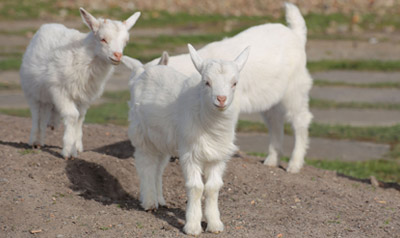 Goats have very strong hooves and they really enjoy digging. Goats will dig shallow holes in the ground and lay in these to rest, or to dust bathe. Dust bathing is when your goat will roll around in dust or soil, as a way to clean themselves.
Goats have very strong hooves and they really enjoy digging. Goats will dig shallow holes in the ground and lay in these to rest, or to dust bathe. Dust bathing is when your goat will roll around in dust or soil, as a way to clean themselves. In the wild, goats would be out exploring and walking around for many hours a day to get the nutrients and variety of foods they need for their diet to keep healthy.
In the wild, goats would be out exploring and walking around for many hours a day to get the nutrients and variety of foods they need for their diet to keep healthy.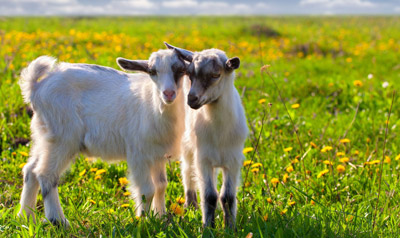 Goats are social herd animals and are not usually happy when they are on their own. Guardians should plan for at least two goats that get on well to live together.
Goats are social herd animals and are not usually happy when they are on their own. Guardians should plan for at least two goats that get on well to live together.








